
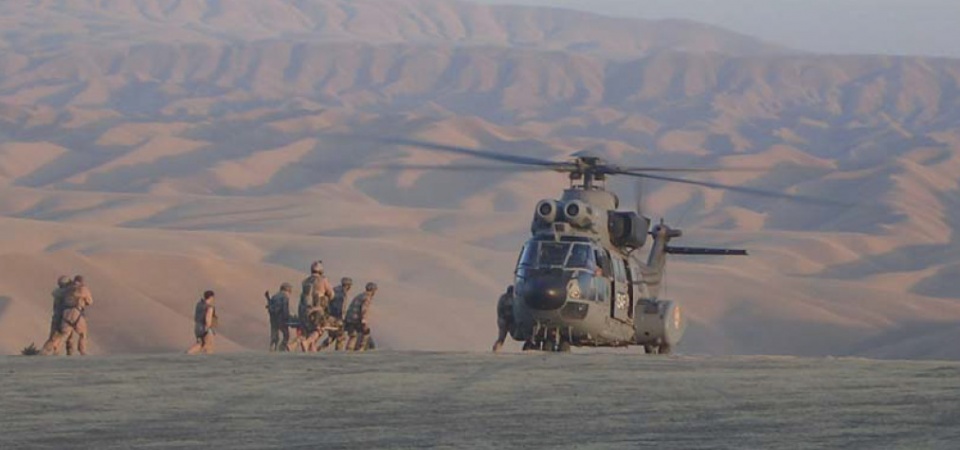
Report: J. PERALBA, J. COUCEIRO DE MIGUEL, V.N. GAVILÁN (SPAIN)
Aeromedical Evacuation Experience - Feedback and Cooperation with Industry for Better Casualty Care
War and combat has served for centuries as an engine for research, progress and as an experimental ground to test theories and hypothesis. Some advances and conclusions were the result of just observations or casual events and others the result of specific scientific research geared for war or just applications of scientific knowledge in other fields of the combat arena. This has also been the case in the medical field.
Introduction
The examples of medical progress based observation and practice in the battlefield have been crucial to the advance of medicine in multiple fields for centuries. Now a days with the possibility of detailed trauma registries and data collection, this becomes even more evident. Part of this medical progress is based on the technological support of medical equipment that has been empowered or designed base on military field medicine experience. In this study we have aimed to highlight and analyze this type of research and development, based in our unit use of some of our pieces of equipment used for support of our aeroemdical evacuation missions and medical military field assets. The challenges that military healthcare providers (physicians, nurses, medical technicians and other health officers) have had to face throughout history of war, has led the need of adequate medical technology support to enable the health with the appropriate current standards of care. This circumstance together with the fact that significant efforts that have been made by nations supporting its Medical Corps for better care has been an important factor in the development of new adequate equipment for military medical purposes, that later can be used in civilian settings. Because of the environment in which military medical operations usually take place, the military medical equipment´s requirements are very demanding. Always lighter, smaller, a heavy duty, and with new and additionally demanding capabilities as needed. As a result of this process not infrequently some of this equipment based on the latest technology not only satisfies the military expectations but also the supports first line civilian needs. Also to be considered is that medical equipment´s evolution needs always a health care provider, and that advanced medical treatment in isolated areas without the appropriate equipment is impossible. This last scenario has been suffered by many military healthcare providers.

Technology is never able to fully replace the healthcare provider´s input nor is the healthcare provider able to replace medical technology support. Military medical personnel working in the field as first response teams are aware of this situation. They are really dependent on the equipment they carry with them, usually adequate medical equipment that allows them to give the best immediate treatment as standards of care demand. To encounter this situation is not an infrequent situation. The battlefield is where many of the injuries need advanced life support manoeuvres and where excellence in the treatment is pursued by the military healthcare providers. This excellence search is certainly empowered by appropriate technological support, regardless of the circumstances. Further echelons in the treatment/evacuation chain also pursue this excellence in the attention of war casualties and have similar needs of adequate medical equipment that can fulfil its requirements. It is important to keep in mind that different care echelons require different specifications. Robustness and integration of systems for the first echelons of care, and more specifically in the case of aeromedical evacuations, where harsh environmental factors, weight and volume limitations and integration of support equipment are essential, have to be seen as paramount requirements. These last requirements become more flexible as we ascend in the levels of care and Role complexity where other factors like specificity of complex equipment capabilities do not have to fulfil these initial requirements and become more similar to civilian environments.
Objectives
For Military Medical Units worldwide, research in medical technology aspects is something not always possible and really familiar to all healthcare providers. On the other hand, clinical research is something that health staffs are really concerned about, because most of them are physicians, nurses and technicians that work in a clinical background. The absence of engineering officers in its structures combined with the lack of immediate results of its observations and research versus the amount of time and resources needed, may be the main reasons why research in this area is not able to be routinely performed. The fact of not always having engineers in their structures while they exist in other squadrons/units is a vital key factor to understand this limitation in our medical field, technological research and development. Their existence inside or related to healthcare providing units would make them close and understanding of the military healthcare issues. Thus would make them able to contribute with all their potential knowledge to the service of this kind of research.

The Spanish Air Force Medevac Unit (UMAER) has collected over the last 20 years experiences in operations such as UNTAG (Namibia), DESERT STRORM (Persian Gulf), SFOR (Former Yugoslavia), KFOR (Kosovo), Enduring Freedom (Iraq), FINUL (Lebanon) and recently in ISAF (Afghanistan) has developed a maintenance and research program based on its medical equipment´s performance. The aim of this program is to share its non classified technological medical data with the industry in order to get current resolution of encountered problems, present and future needs for the future market, and through this knowledge improve not only its operational capabilities but its maintenance potential and add cost saving measures as a consequence of this collaboration. In order to do so the Logistic & Engineering section of UMAER has considered its technological equipment as weapon systems and presented them as such in terms of operability and availability to the Air Force Combat Command, from which the unit depends, as a clear concept of weapon research and employment endeavour. Our aeromedical or medevac missions’ success depends on many factors, such as airlift & helicopters squadrons, force protection forces, special operations unit, and other Air Force resources involved. Making the difference means having all the resources ready and perfectly capable of performing their mission including the medical system of arms, combat ready, in line with the rest. This view of our medical equipment as systems of arms implies that it´s knowledge and capabilities will enable a more effective operational use and mission result. UMAER´s duty is to have its all its personnel and equipment combat ready at the theatre of operations (TOO) and in its home Base. In that process a lot of different information is regularly collected and processed from our systems of arms. We present in this study the integrated transport platform as an example of this full process.
Study design
1. Adaptation of the medical transport platform to Spanish Air Force aircrafts and others.
2. Data collection tool.
Historic background
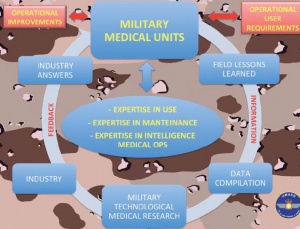
In 2005, 2 Life Support platforms for Trauma and Transport (LSTAT) were delivered to UMAER by the Air Force Combat Command through the Air Force Surgeons Office as a medical tool to provide better care in the field and during aeromedical evacuations. These were the first complete integrated systems that this medevac unit had ever had. The need of familiarization and study of the system became part of the logistic and engineering objectives. This year, one Flight Surgeon, one Flight Nurse and four paramedics were sent to the matrix manufacturer facilities in order to attend a course to operate with the new system and became familiar with the medical device. The first training and use experiences were taken at UMAER HQ in Torrejon AFB (Madrid- SPAIN) with a Laerdal dummy. Instruction and use was implemented, and operating with the system was fairly easy for all the medical personnel because most of them had experience working with the separate equipment, now integrated in the integrated platform. Getting used to the new information features that the platform offered was a little harder, but it was necessary to be able to use it to get all its added value. Maintenance operations were performed by paramedics. It took them six months of practice to start feeling comfortable and send at least 5 questions per month to the manufacturer´s customer service as a feedback and problem solving examples. During these first five months the platform flew on the aircrafts only as a backup system. Its first real mission was in October 2005. None of the platforms were deployed until December 2005 when one unit was deployed at Manas AB (Kyrgyzstan) for operation ISAF. In 2006 the new maintenance system was implemented at UMAER for better control and for research reasons. This system was stricter than the one recommended by the manufacturer´s manual. This year four more units arrived at UMAER facilities. This platform system was adopted as one of the principal medical transport equipment in 2006 but originally only for tactical and strategic medical transport (fixed wing). The first experiences in rotary wing took place in Madrid in January 2006 and in February two units were deployed at Herat FSB (Afghanistan). The first fixed wing flight in rotary wing in a real mission with the LSTAT took place in February 2006. Since then, at least two of these platforms have been deployed permanently in operations worldwide and still are.
Adaptation of the medical transport platform to Spanish Air Force aircrafts and others
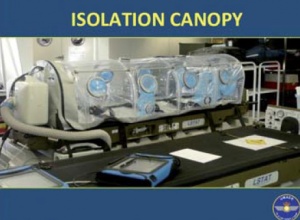
In the aeromedical field, in addition of all the stated factors of research and maintenance, the INTERPHASE of our medical system of arms with the designated medevac aircraft (fixed and rotary wing) became a paramount objective. The aim is to exploit the maximum of its capabilities and to get the maximum of its possible operability. In order to do this the previous step was achieved to get the airworthiness for the integrated transport platform. Some of the goals performed in this area are the following: List of tasks.
- Certifications of airworthiness for aircraft of the SPAF (Boeing 707, CN-295, C-130, AS-332).
- LSTAT fixations development and integration in the following aircrafts: Boeing 707, CN-295, C-130 (all ARINC System) and HD-21 (SPAF dedicated system)
- Adaptation of the electric system, including new developments.
- Stability tests on board in multiple aircrafts suggested the development of multipurpose electrical safety stabilizers.
- Multiple standardized transformers were developed to utilise electrical sources from aircraft of other air forces (inversor, batteries and converted standard power). This enables UMAER´s LSTAT to operate with other nationalities´ aircraft of different nationalities.
- Multiple aircrafts plugs needed to be developed for specific adaptors (pigtails) in order to receive the power straight from the different sources
- Dedicated LSTAT electrical panels were implemented in the SPAF Boeing 707 (471 SQ.) Developed by UMAER and JOSAIR.
Features: 28 V DC, 115V / 400Hz, 220V / 50 Hz, Line 1: 3500 Watts, Lines 2-6: 1000 Watts, up to 16 Amps.
- Long range secondary display cables
On these issues, there have already been reports from the adapted aircraft which have been recorded and processed for feedback for the industry and SPAF flight squadrons.
- Experiences in rotary wing aircraft (ASS-32 Superpuma) for forward medevac missions were not completely satisfactory, mainly because aircraft limitations but also because of platforms´ limitations. Results were reported to UMAER HQ in Madrid and the Logistic & Engineering Section started working on them. So far, a fixation system was developed and in-flight tests under extreme weather conditions were performed in Afghanistan.Temperatures between -25ºC (-13ºF) and 52ºC (125ºF) were reached inside the helicopter. Strong winds hit the system because of its location.
- Experiences in fixed wing (C-130, CN-295, C-160) in ISAF Patient Movement Request (PMR) missions were mainly satisfactory but electrical and fixations issues were reported. o LSTAT Use and operational procedures for tactical evacuation in its different configurations have been developed for C-130,CN-295 and Boeing 707.
- Isolation canopy adaptation and procedures for tactical/strategic aeromedevac with the LSTAT in any SPAF aircraft. Airworthiness certificate was obtained for this equipment when mounted on the LSTAT.
- Strategic use of the platform was completely satisfactory in terms of therapeutic and operational use.
- LSTAT Use and operational procedures for strategic evacuation in its different configurations have been developed for C-130,CN-295 and Boeing 707.
-Central Control Panel has developed to control four LSTATs simultaneously for the Boeing 707. With this new piece of equipment patient´s surveillance capabilities have been gained.
Data collection tool
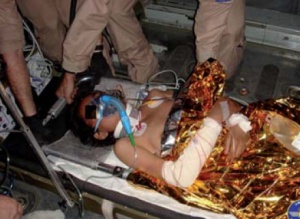
Lessons learned from use during operations. The first question was what data should be collected? “The more, the better” was the first answer. A balance between efforts and benefits was the final decision for the study. The monthly collected data was the following one:
- Operational status of each of the subsystems.
- Electrical status of the platforms.
- Missions performed with all of the LSTATs.
- Aircraft / vehicle used in the medical evacuation.
- Personnel operating the LSTAT while with a casualty.
- Personnel performing maintenance operations.
- Type of mission.
- Hours of use.
- Reports in environmental issues.
- Reports in specific malfunction with/without patient.
- Others.
With all the collected data the LSTAT maintenance study has been focused on:
- Maintenance system. National and International operations.
- LSTAT reliability.
- LSTAT availability.
- Identification of "Weak Points".
- LSTAT development.
System overview
This picture shows the number of the programmed maintenance inspections made by UMAER´s personnel throughout this 5 year period (2005-2010). The maintenance system has the following possible status: Platform Status: Available / Unavailable Subsystems equipment operational status: Operative / Partial operability / Inoperative LSTAT Medical equipment subdivision and subsystems model of use (serial / parallel) under customer´s point of view.
The primary subsystems are the ones needed for Advanced Life Support. If any of them fails, under the point of view of a customer and under Spanish Air Force regulations, the platform fails and will not be allowed to embark into the aircraft. In this case we would have an unavailable status. The secondary subsystems are the ones that support Advanced Life Support, but are not crucial. If any of them fail, under the point of view of a customer and under Spanish Air Force regulations, the platform will still do its job and it would be allowed to be used in the aircraft.
Data Analysis and Discussion
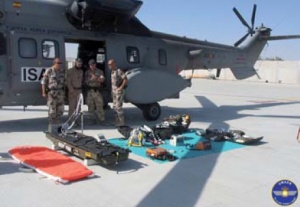
The collected data was the source for numerous diagrams and graphs but the ones that best show the objectives of this study are the following ones. There are others that would belong to a more specific engineering study. The accumulative rates gather partial and total availability data of each of the platforms. In this graph all platforms that belong to UMAER are represented, no matter where they were. This graph shows how after year 2009 new maintenance actions, availability rates have grown. Logistic related problems are the main reasons why these values do not drop in a very remarkable way. Some new adequate directions related to the platforms have been given since 2009 and they are giving an answer to the detected weak points and challenges.
Good planning of the platforms flight rotations between Spain and the different TOOs is vital to obtain satisfactory availability rates, but it does not guarantee it. This graph shows the decrease investment that has been made in cargo flights maintaining an adequate availability rate. Maintenance planning schedule has been vital to obtain these results.
Sustained efforts should be held in order to keep its availability in good rates. Currently we cannot save any efforts in this area until manufacturer´s maintenance plan may change.
New maintenance strategies and plans implemented in 2009 are working well. We try to have most of LSTAT´s unavailability rates at UMAER HQ., because there are enough backup platforms. A significant percentage of unavailability is caused by the platforms that need extraordinary repairs and wait at UMAER´s HQ to be delivered to the matrix house. Operational issues demand high availability rates in the TOO (over 75%). Rotation rates are very much related to the availability at the TOO so the logistic chain becomes the limiting factor in this scenario.
The processing of the platform´s maintenance operations and data treated as a weapons system made possible for the Logistic & Maintenance section apply different maintenance techniques:
- Forecasting techniques: Medium Time Before Failure (MTBF) that was very helpful for the Air Force Combat Command in terms of budget estimation.
- Availability percentages we counted for operational and economical issues.
- Reliability percentages were counted for logistic and economical issues.
- 80-20 Diagrams for weak points identification for forecasting
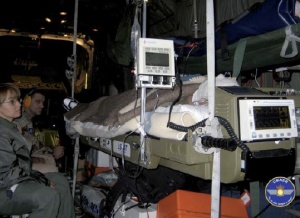
Statistics show that the healthcare personnel had not too many problems getting used to the clinical use of the platform. The fact of implementing this new maintenance system made it possible to have the equipment in higher values of operability, and as a consequence platforms were able to be used in real missions. However these values at the beginning were too low. As time went by, the survival chain became more reliable and military healthcare providers turned out to be more confident with the equipment, and so did the health personnel involved in patient´s care. Problems that the manufacturer was not aware were recorded and sent to UMAER HQ. Then they were reported to the matrix manufacturer. UMAER made its own research and proposals for cost reduction and noticed some delays caused by the manufacturer´s periods of answer. Sometimes problems were not solved by them with the desired speed. Because of operational issues at theatre of operations the resolution of problems had to be solved as soon as possible, and this failure to prompt resolutions became an important operational limiting factor. An expert knowledge of the multiple aircraft used is crucial to exploit all the capabilities of the platform, no matter what the conditions are. This applies to the multiple ground vehicles used for medical evacuation purposes at the TOO, no matter what the conditions are.
Suggested improvements from the lessons learned
This improvement proposal has been transferred to the industry in order to stimulate investment in research to satisfy the medical military needs found in today´s operation and what UMAER presumes will be the intermediate/long term challenges.
- Less maintenance dependent equipment.
- More autonomous equipment.
- More reliable software.
- More user friendly software to be able to easily use all its capabilities
- Search for a standardized medical equipment´s connectors.
- Search for a standardized medical oxygen’s connectors.
- Set a balance between equipment´s capabilities and real medical needs. More capabilities means less portability and more personnel involved in transport.
- Flexible / multipurpose equipment is needed because is cheaper and gives an answer to immediate changing missions.
- Electronic medical tag that can hold all the standardized medical data since the first responder attended the casualty. Data should be recorded from a portable device carried by the care giver. This device should have preset options in a multilanguage software. The data inside the tag should be encoded and when the medical personnel may need to access it, the portable device will display the clinical data in the desired language. This would be very useful in multinational joint operations. The device should be able to be attached to integrated systems.
Expertise in maintenance experience
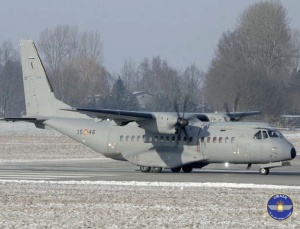
This issue is one on which Military Medical Units usually do not focus much. The idea of having the same paramedics that will use them instructed in maintenance issues has led them to a better clinical and operational knowledge of the platform. The new and stricter LSTAT platform maintenance system was implemented in January 2006. This has allowed having an improved control over the platform and has led the personnel involved as its maintainers to a very high expertise level of use for clinical purposes. The time spent in getting used to maintenance operations was three times longer than the one spent in clinical ones. This was expected because the paramedics had a lack of knowledge in electrical issues that was mitigated with instruction. The number of platform´s problems detected has been stable from 2007 to 2009. In 2010 they have slightly dropped. Operational limitations because of environmental issues have been reported and shared with the manufacturer. This includes further applications improvements of the platform have been planned in regards to UMAER´s Logistic & Maintenance section: Aircraft electrical modifications, platform electrical modifications, new ideas for fitting and fixations, etc.
Expertise in intelligence medical operations experience
The expertise in this area is crucial for the mission success. Once the other two fields of expertise are accomplished this one is the natural consequence to exploit the equipment´s best capabilities that may make the difference. How to gather and transfer all the collected knowledge in order to accomplish the mission successfully is part of the intelligence expertise. Without the previous expertises, operations will be carried out with the proper equipment but with a lack of capabilities. In this case operations might take place with a miss. If this expertise is performed correctly the following events had to take place:
- The quality of medical attention as well as casualty transportation will rise dramatically.
- Forecasting events will be a lot easier.
- Solving en-route problems will be an affordable issue.
- Operational efforts and resources will be adjusted to the theatre of operation´s real circumstances and medical capabilities.
- Saving money and resources will take place.
- National or multinational joint operations will benefit from it.
Comments outsourced from the maintenance system
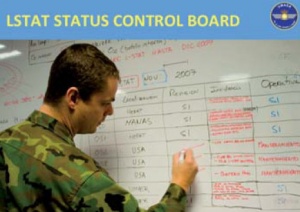
- Investment in maintenance is profitable.
- Allowing UMAER´s instructed personnel to do minor corrective operations would increase dramatically the availability rates. Mainly at the TOO. UMAER´S paramedics have been technologically instructed to be able to support maintenance operations and data collection.
- The personnel involved in the LSTAT maintenance process (mainly paramedics) has obtained a high level of expertise operating with the platform.
- Maintenance should be focus mainly in the primary subsystem.
- The forecasting has allowed the Air Force to save money because of logistic shortcuts.
- Availability at the TOO and in Spain is growing when new planning has taken place.
- A high platform rotation rate between TOO and Spain does not guarantee much higher availability rates.
- A high sustained effort in maintenance is necessary and useful.
- Unavailability rates at the TOO should be lower because of its impact in operations.
- Reliability studies are fairly interesting by themselves but combined with forecasting ones are a very useful tool to plan operational costs. In the other hand they are crucial for the industry themselves.
- "Weak points" identifications through 80-20 diagrams are very important for the manufacturer for the new developments.
- New features have been gathered to present to the manufacturer with our requirements for the next generation LSTAT. For example "plug and play" modules to lower the maintenance operations while deployed.
- The manufacturer´s maintenance program should be reviewed to change the age factor to the working hour’s factor to go through its major corrective maintenance operations. The annual preventive maintenance and the three year calibration (overhaul).
- The efforts in making new and more efficient batteries are needed to increase its autonomy.
- New aspects of integrated systems should be discussed in further meetings or forums. The good and bad are changing.
- Others.
The Industry
Based on the previous study it suggests that it would be positive to share the following issues with the industry:
- The current problems to get an improvement/answer to them.
- Ask for improvements in the product to get an optimization of it. Products have a development capability without having to change its technology.
- Detected needs for the development of new technologies.
- The improvements shared do not have to exclusively concern medical matters. They can also be others that may influence the mission in general.
- The weak points of its products to change the current situation.
Conclusions
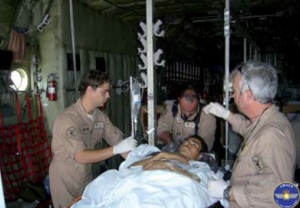
- Standardization is needed in many technological areas. This doesn´t mean to put aside innovation.
- Military experience at the Theatre of Operations is essential for the better development of military and civilian products.
- The notification of the military experience to the industry will solve some of the Armed Forces´ problems. They can be based in the immediate answers provided by these same Armed Forces on their own, sponsored industries research programs. It will be difficult for the industry to reproduce the field´s conditions, so military supervisors could join these industries research programs as advisors.
- The different Armed Forces should be more collaborative with its data and should release more non classified medical information to the industry. This will allow the industry to develop products that satisfy medical military requirements.
- This process will give as a consequence the collection of the new military trends in the medical field to which only the industry will be able to give a complete answer.
- Investment in maintenance is needed. In a short term period to get better results on equipment´s availability and better quality in healthcare attention. The fact of implementing a severe maintenance and data collection program on their medical technological equipment led by an engineering section will provide the Medical Corps:
- The capability to predict possible failures, malfunctions or breakdowns in the medical equipment.
- The capability to predict possible failures malfunctions or delays in the logistic chain caused by medical issues.
- The capability to provide a better healthcare assistance to the casualty, no matter where it may be, trough the evacuation chain.
- Profound knowledge of working. Medical equipment clearly enhances operability and care for poor casualties.
- Time- effort used in technological instruction of health military personnel proofs to be an excellent cost-effective investment in terms of returned benefit in better use of equipment.
- Improved knowledge of its capabilities.
- Problem detecting and solving ability.
- Additional conclusion noted has been the motivational effect of technological instruction for our flight medial technicians to the point that one of them just achieved after five years of study his own degree of superior industrial engineering.
- In terms of research and innovation data collection and analysis of information provides not only a benefit for the user and improved mission capacity but improves a valuable feedback for the industry.
- Off spin of field data and collaboration proofs to be valuable in solving some of the user detected problems that once resolved reports an additional gain of this medical system of arms and its operational capabilities.
- Further analysis of collected information leads to recognition of limitations of equipment that is corrected by industry can increase its spectrum of use.
- Finally, conclusions of technological research in conjunction with patient care records and trauma registries and outcomes serves as important tools for the research and manufacturing of new medical weapon systems that will not only resolve encountered problems or limitations but include new features that will improve its capacities and therefore enable us to improve our casualty care.
The new products that solve the challenges/requests raised by the military medical healthcare providers will allow the Military Medical Corps
- Better economy.
- More intense attention to the casualty.
- Full exploitation of the equipment capabilities with less instruction needs.
- Less personnel involved in transport and operating the medical equipment.
- To reduce the human error rate by embedded double-checking software operations.
- Better quality in the military healthcare services.
Finally the mission gets its benefits from all the processes because the Medical Corps Made the Difference.
Author:
José Peralba. Medical Officer. Flight Surgeon. COM. UMAER. Spanish Air Force.
First and corresponding author
Co-Authors
Javier Couceiro de Miguel. Military Flight Nurse. LOG COM. UMAER. Spanish Air Force.
Vicente Navarro Gavilán. Military Technitian (Flight Paramedic). Industrial Engineer. RES SUP. UMAER. Spanish Air Force.
Date: 02/04/2019
Source: Medical Corps International Forum (1/2012)











